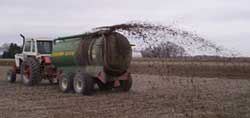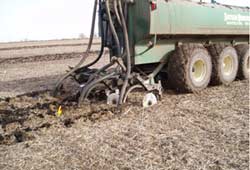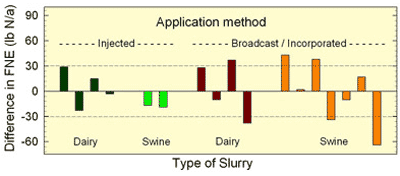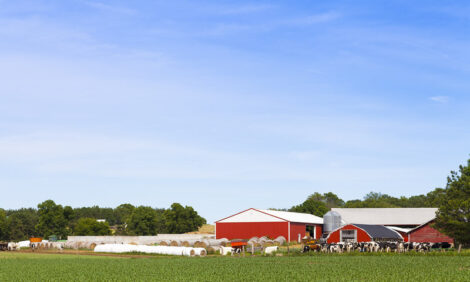



Nitrogen Availability from Liquid Swine and Dairy Manure
Researchers at the University of Minnesota have compared predictions for nitrogen availability from dairy and pig manure in soils with practical results. They found generally good agreement but the variable with the greatest effect was the method of manure application, writes Jackie Linden for TheDairySite.In terms of its nutrient content, manure is increasingly valuable. For both short-term decisions on fertilizer purchases and for long-term nutrient management plans, farmers and their advisors need reliable predictions of nutrient availability from manure, according to Michael Russelle, Kevin Blanchet, Gyles Randall and Les Everett of the University of Minnesota.
They have recently published a report of their on-farm research designed to test the accuracy and precision of current University's predictions of nitrogen (N) availability from dairy and swine manure slurry. The full title of their report is Nitrogen Availability from Liquid Swine and Dairy Manure: Results of On-Farm Trials in Minnesota.



The authors explain that the vast majority of dairy and swine manure is stored and applied as slurry. About 80 per cent of the phosphorus and 90 per cent of the potassium in manure slurry is available for crop uptake during the first growing season after application.
However, predicting N availability is more difficult because losses can occur before plants absorb the N and because the element is present in both inorganic, rapidly available forms as well as organic, slowly available forms in manure.
The Minnesota group set out to test the accuracy of the University's predictions of N availability from dairy and pig manure. They did this by conducting field experiments were conducted on 13 Minnesota farms from 2004 through 2006, using corn growth as the main parameters.
The experimental plots were as similar as possible in terms of previous cropping, and no manure had been applied within the previous three years. Corn was the test crop planted in the spring following manure application in late autumn at each location. Farmers agreed to avoid fertilizer N application on the plot area. Phosphorus and/or potassium fertilizer was applied before spring tillage to two sites where soil tests indicated a deficiency.
Manure slurry from lactating dairy herds or liquid swine manure from finishing barns was applied at 10 sites using the farmer's own equipment, which had been calibrated immediately before the application. A certified commercial applicator applied the manure at the other three sites. Strip widths (12 to 16 rows) were determined by available field equipment, and lengths (500 to 2480 feet; 152 to 756 metres) were determined by field dimensions.
The manure was applied by direct injection or broadcast. The three main types of equipment used are pictured above.
Dairy manure slurry from the five farms contained an average of 24 lb total N and 13 lb ammonium N per 1000 gallons (2.88 and 1.56 kg per litre, respectively). The researchers found that ammonium N concentration was nearly constant, but the proportion of ammonium N to total N ranged from 41 to 81 per cent.
Pig manure from eight farms was more variable in composition than the dairy manure slurries, and both ammonium N and total N varied with solids content. In contrast to dairy manure, the proportion of total N that was present as ammonium N in swine manure was less variable, averaging 79 per cent and ranging only from 72 to 89 per cent.
The main results of the trials are shown below.

Conclusions
* "This is a good time to upgrade application equipment or to use custom applicators" |
Russelle and his co-workers found that the predictions of N availability were most reliable for injection application. For broadcast-incorporated manure, nearly one-half of the predictions were more than 30 lb N per acre (33.6 kg N per hectare) higher or lower than the measured N availability.
They explained that this variation was likely to be due to ammonia losses from manure that were higher or lower than average due to weather conditions (rainfall, temperature, wind speed) after application and before incorporation.
These results emphasize both the strength of current (2007) University of Minnesota predictions for injected manure and the difficulties in predicting results for broadcast manure, according to the researchers.
Direct injection techniques conserve more of the inherent nutrient content of manure, simultaneously reducing the risk of nutrient losses to the environment.
With the high cost of commercial fertilizer and increasing scrutiny of manure management, this is a good time to upgrade application equipment or to use custom applicators, say Russelle and his co-workers. Either of these can deliver more manure value to the crop.
Further Reading
| - | You can view the full report by clicking here. |
March 2009


